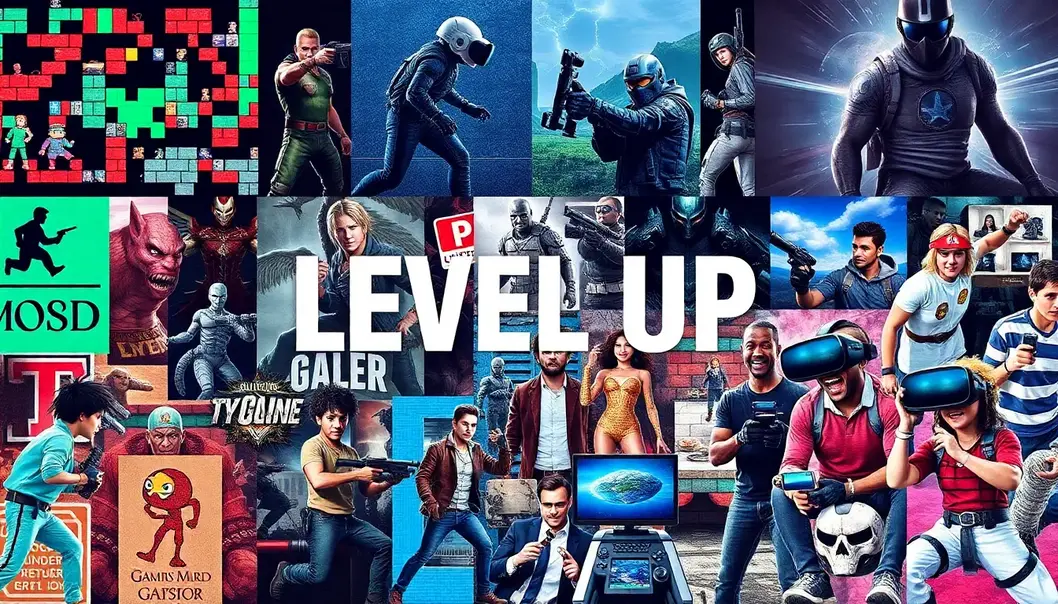Video games have come a long way from their humble beginnings as pixelated diversions to becoming a mainstay of modern entertainment and culture. Young adults today are part of a generation that has witnessed rapid advancements in gaming technology, narrative complexity, and interactivity. From the 8-bit classics to photorealistic virtual worlds, the video game industry has continually pushed boundaries, influencing everything from social interactions to global economies. Let’s explore the evolution of video games and how they’ve transformed into a vital element of contemporary youth culture.
The Pixelated Age: Origins of Gaming
![]()
The world of video games as we know it today traces its roots back to a humble and pixelated beginning. In the dawn of digital entertainment, a groundbreaking creation named ‘Pong’ emerged in 1972, captivating audiences with its simple two-dimensional table tennis simulation. This primitive yet addictive game not only ignited the imaginations of players but also set critical precedents in the development of the gaming industry.
Following the splash made by ‘Pong’, the 1970s and early 1980s saw the rise of bustling arcades, which became cultural icons within themselves. These coin-operated machines heralded a new social phenomenon where young people gathered, not just to play, but to compete and socialize. Icons like the maze-chasing antics of characters mesmerizing gamers in darkened rooms spoke to a collective enthusiasm, unparalleled in other forms of entertainment. Arcades became the laboratories where gaming culture was both experimented with and established.
Parallel to the triumph of arcades was the ascent of home consoles, shifting the gaming experience from public spaces to living rooms across the world. It was here, amidst blinking lights and the hum of rapidly advancing technology, that gaming began to resonate deeply with young adults. Home consoles democratized access to video games, enabling families to bond over pixelated adventures from the comfort of their couches. This shift marked a significant transition from mere novelty into a staple of modern leisure.
The transformative era of the pixelated age laid a foundation for the complex narratives and technical sophistication seen today. It was a time when players were introduced to interactive storytelling in its most rudimentary form. Young adults, enmeshed in this nascent culture, carried forward the enthusiasm and passion that would fuel continuous innovation. The legacy left by these initial forays into gaming continues to reverberate, as the spirit of competition and community thrives in modern gaming platforms.
The trajectory of video gaming culture has been one of exponential sophistication, yet the charm and simplicity of its origins remain beloved and influential. While the graphics and gameplay have evolved leaps and bounds, the heart-pounding excitement that first pulsated through arcade halls and home networks pulses on, shaping the entertainment landscape in profound ways.
The Digital Revolution: Gaming in the Modern Era

The digital revolution in gaming has brought us from the simple pleasures of pixelated adventures to immersive, story-driven worlds. This transformation has primarily been driven by advancements in console and PC technology. Today’s games boast photorealistic graphics, intricate narratives, and complex game mechanics that engage players like never before.
The landscape of video games shifted dramatically with the advent of online multiplayer platforms. These platforms allowed players to connect globally, fostering not just competitive gameplay but a sense of community and collaboration as well. The rise of esports has turned gaming into a spectator sport, drawing massive audiences and generating significant economic value through sponsorships and advertisement. Esports tournaments are now some of the most-watched entertainment events worldwide, complete with professional teams and celebrity gamers.
Alongside this, mobile gaming has opened a new frontier. With the ubiquity of smartphones, gaming has become accessible to a broader audience. Simple games evolved into complex, visually stunning experiences that can be played on the go. This accessibility has democratized gaming, turning it into a pastime for all demographics. Mobile gaming has become a major source of revenue, influencing the broader games industry to consider cross-platform compatibility.
These innovations have entrenched video games within mainstream culture. As they continue to evolve, games are increasingly recognized for their artistic value and storytelling potential. This recognition has elevated gaming from a niche hobby to a dominant cultural force, driving the industry forward both socially and economically.
Final words
The evolution of video games mirrors technological progress and cultural shifts. From simple beginnings, gaming has grown into a powerhouse of art and commerce, influencing myriad aspects of life. As young adults, embracing gaming means participating in a dynamic landscape that continually shapes leisure and interaction. Stay tuned for what comes next!
Ready to dive deeper into gaming culture? Join our community for more insights and updates on the latest in the gaming world!
Learn more: https://www.gamingculturehub.com/join
About us
Gaming Culture Hub offers an engaging platform for gaming enthusiasts to connect, learn, and share their passion for video games through articles, forums, and live events.

